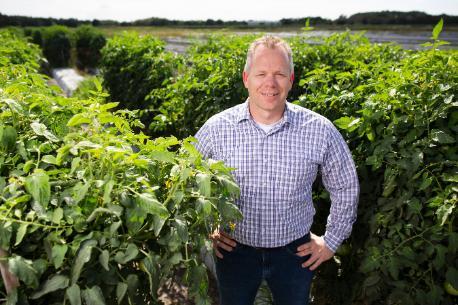By Clint Thompson
An innovative way of producing specialty crops provides Florida growers a more efficient, and potentially, a more sustainable way of farming.

Associate Professor of Horticultural Sciences at the GCREC
Nathan Boyd, University of Florida Institute of Food and Agricultural Sciences (UF/IFAS) professor of horticulture and weed science, focused on the topic of relay cropping during his presentation at the Citrus and Specialty Crop Expo.
Relay cropping is the production process where one crop follows another, but the life cycles overlap each other. Boyd said a common example is planting a vegetable into a crop of strawberries. Once a grower begins harvesting their strawberry crop, they then plant a vegetable such as an eggplant into the center of the two rows of strawberries. A producer plants two crops in less time than one after another
“A lot of growers are selling by contract, so they need a wide planting timeframe. If they want to plant into a bed of strawberries, the earliest plantings have to happen when the strawberries are still there. The other option is if you’re growing bell peppers and another vegetable, people aren’t going to drive through Georgia to come to Florida to get a crop if it’s cheaper in Georgia. You’ve got to be able to time your markets so you can produce something before Georgia does. Often, you don’t have time to have one crop after another so relay cropping allows you to squeeze them together,” Boyd said.
“You’re using the same plastic for two crops, fertilizer for two crops; you’ve fumigated the bed one time. It just increases the overall efficiency.”
One factor that growers need to consider, though, is planting date. When a grower decides to plant the vegetable crop will determine yields.
“If you plant the eggplant later, yields are a lot lower. The lower yield is not enough to compensate for the costs related to removing the strawberries by hand. You’ve got to plant early enough to maximize your yield. It actually contradicts what the common thinking was, which was, plant later because it’ll compete for a shorter amount of time,” Boyd said. “But planting later also saw hotter temperatures which meant lower yields. You’ve got to plant early. Them growing together doesn’t affect it negatively. Your yields will stay higher, and you’re going to make a profit.”









